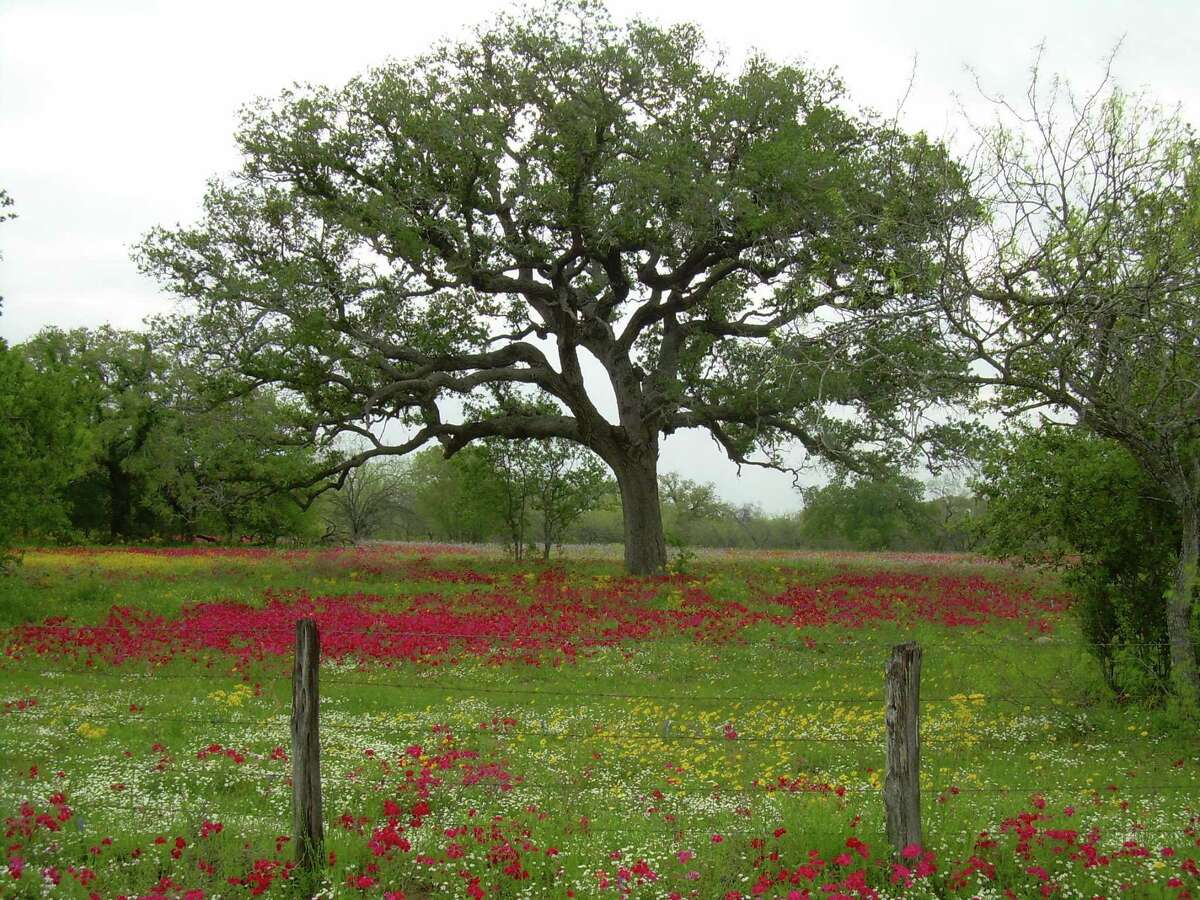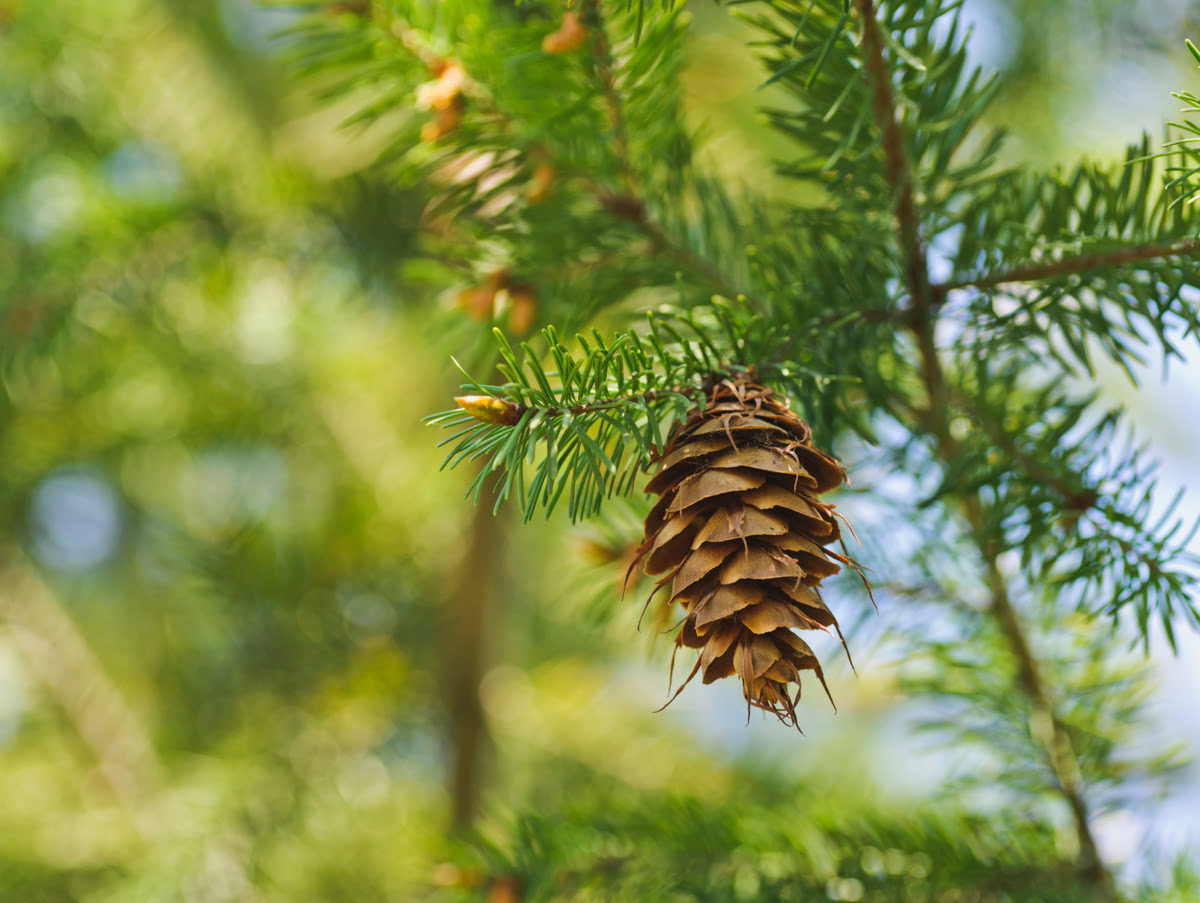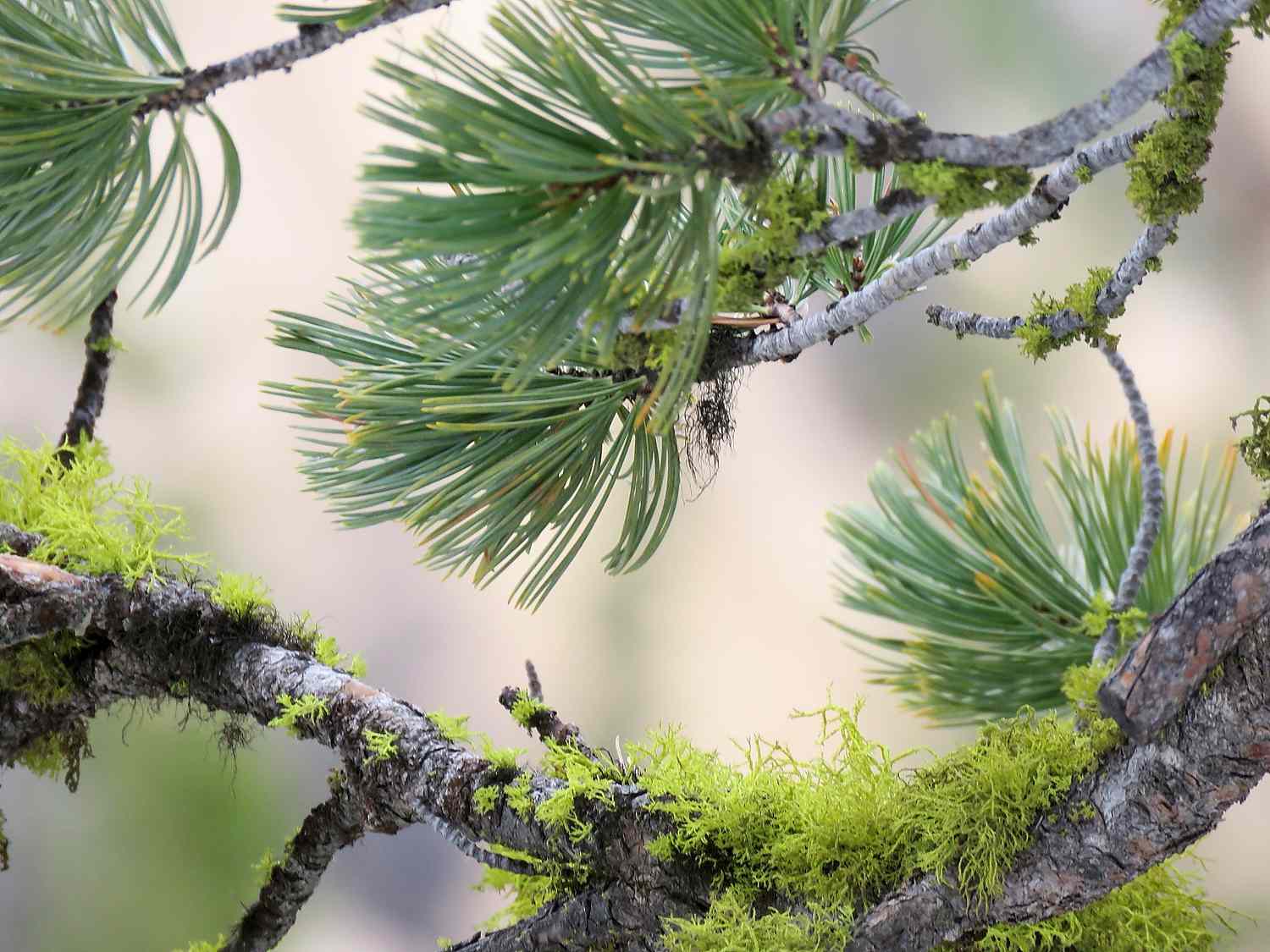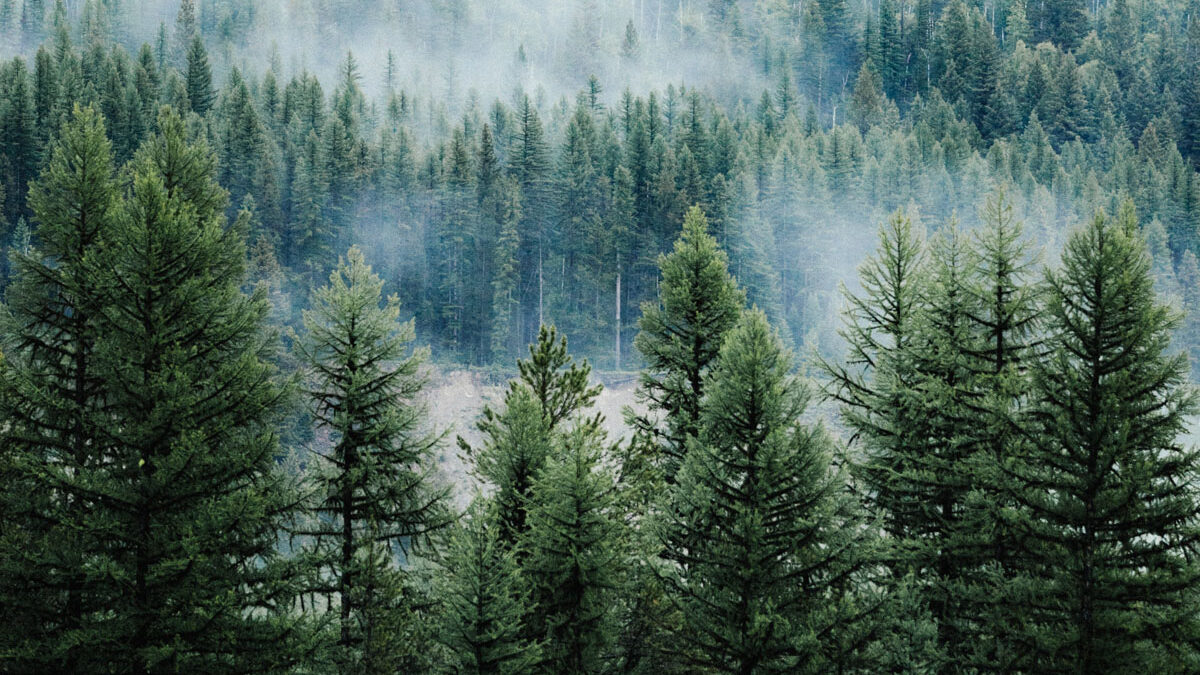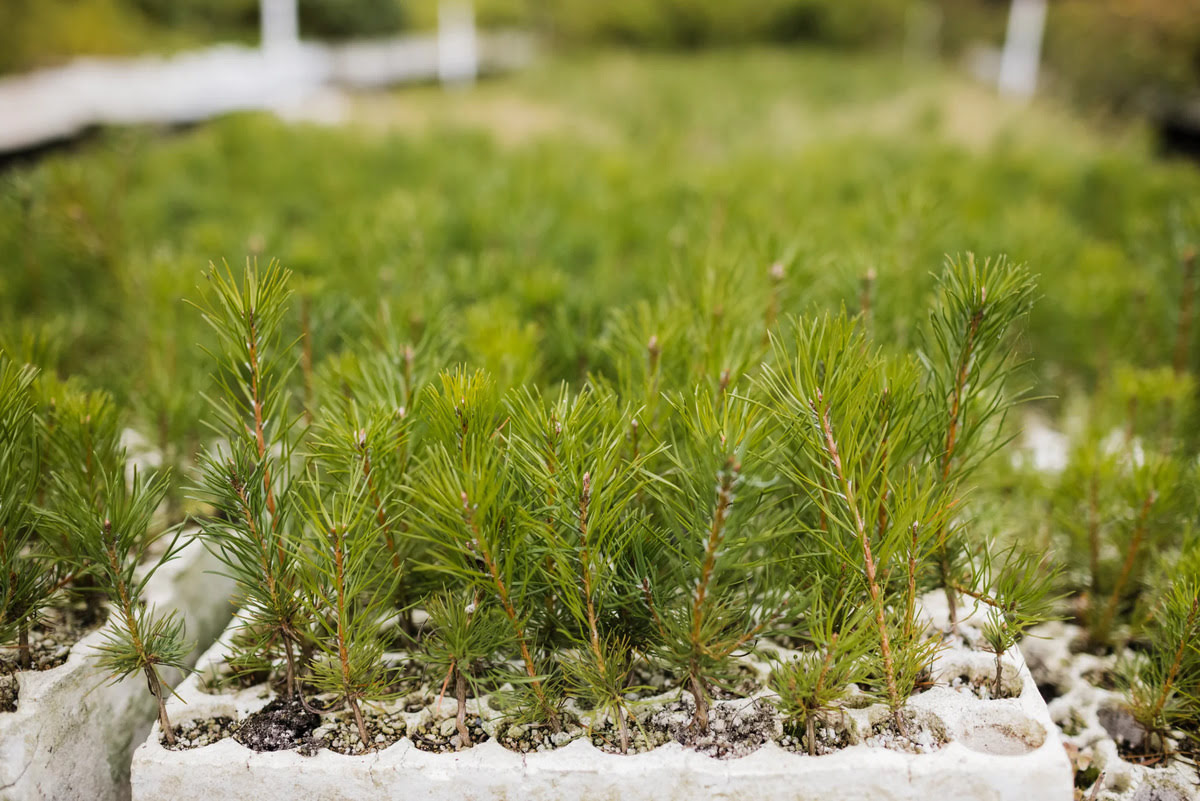Home>Gardening News and Trends>Latest News>What Grows Under Pine Trees
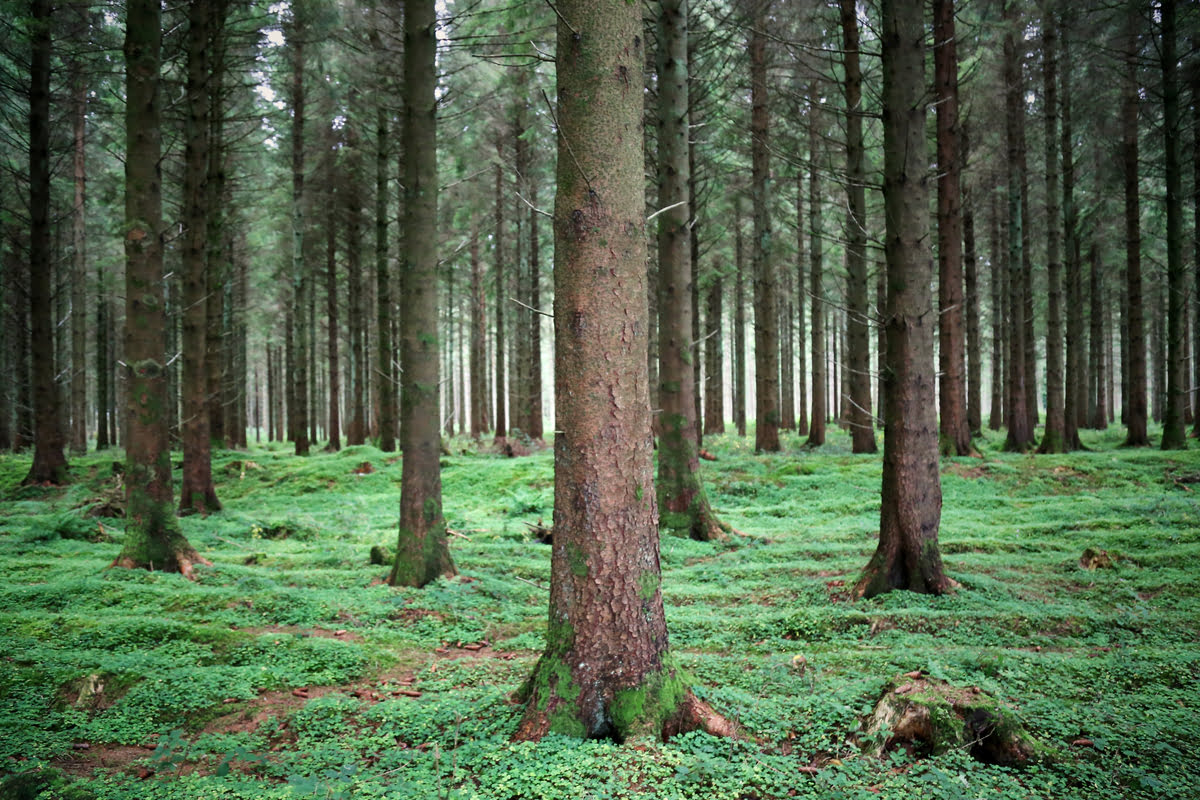

Latest News
What Grows Under Pine Trees
Modified: January 22, 2024
Discover the latest news on what grows under pine trees, including helpful tips and insights for successful gardening in shaded areas.
(Many of the links in this article redirect to a specific reviewed product. Your purchase of these products through affiliate links helps to generate commission for Chicagolandgardening.com, at no extra cost. Learn more)
Table of Contents
- Introduction
- Characteristics of Pine Trees
- Challenges of Gardening Under Pine Trees
- Conditions Under Pine Trees
- Choosing the Right Plants
- Groundcovers for Pine Tree Areas
- Shade-Tolerant Plants for Pine Trees
- Perennials for Pine Tree Areas
- Shrubs for Pine Tree Areas
- Tips for Successful Gardening under Pine Trees
- Conclusion
Introduction
Gardening is a rewarding and fulfilling activity that allows us to connect with nature and beautify our surroundings. However, when it comes to gardening under pine trees, it can present some unique challenges. Pine trees have distinct characteristics that can affect the growth and development of plants beneath them. This article will explore the art of gardening under pine trees, providing insights into the conditions and plant choices that thrive in this environment.
Pine trees are known for their towering height, evergreen foliage, and distinctive pine cones. They not only provide shade but also add an element of beauty to any landscape. However, their presence can create specific conditions that are different from other areas of the garden. The needles that fall from pine trees create acidic soil, which can make it challenging for many plants to thrive. Additionally, the dense canopy of pine trees limits the amount of sunlight that reaches the ground, making it a predominantly shaded area.
Despite these obstacles, with proper understanding and planning, it is possible to create a thriving garden under pine trees. By selecting the right plants that are adapted to the specific conditions and utilizing appropriate gardening techniques, you can transform the space beneath your pine trees into a lush and vibrant garden.
Characteristics of Pine Trees
Understanding the characteristics of pine trees is essential for successful gardening beneath them. Pine trees are evergreens with long, needle-like leaves that grow in clusters. These needles can vary in color, ranging from bright green to blue-green or silver. The shape of the needles can also differ among different pine tree species, with some being short and dense, while others are long and more spread out.
Another notable characteristic of pine trees is their ability to produce pine cones. These cones contain the tree’s seeds and play a vital role in its reproductive cycle. Pine cones can vary in size and shape, depending on the particular species of pine tree. They serve as a distinctive feature of pine trees and can add natural beauty to any landscape.
In terms of height, pine trees are known for their towering presence. They can reach impressive heights ranging from 30 to 120 feet, depending on the species. This height provides shade to the vegetation growing beneath them, creating a particular microclimate.
Additionally, pine trees have a unique way of shedding their foliage. Instead of dropping all their needles in the fall, like deciduous trees, pine trees shed their old needles gradually throughout the year. This constant dropping of needles creates a layer of organic material on the ground, altering the soil composition and acidity level.
It is important to keep these characteristics in mind when planning your garden under pine trees. The shade, acidic soil, and continuous needle drop should be considered when selecting suitable plants and implementing proper gardening practices.
Challenges of Gardening Under Pine Trees
Gardening under pine trees can present several unique challenges. Understanding these challenges is crucial to ensure the success of your garden. One of the main obstacles is the acidic soil conditions created by the fallen pine needles. The decomposition of these needles over time releases organic acids, lowering the pH of the soil. Most plants prefer a slightly acidic to neutral pH, so the acidity of the soil under pine trees can be detrimental to their growth.
Another challenge is the limited availability of sunlight. Pine trees have a dense canopy that blocks a significant amount of sunlight from reaching the ground. This shade-loving behavior, while beneficial for the pine tree itself, can be problematic for other plants that require full or partial sun. Without adequate sunlight, plants may struggle to photosynthesize and grow properly.
The continuous needle drop from pine trees can also pose a challenge. As new needles grow, older ones naturally shed and accumulate on the ground. This layer of decomposing needles can create a thick mulch, which restricts moisture penetration and airflow to the soil. It can lead to poor drainage and root rot if not properly managed.
In addition to these challenges, competition for nutrients and water is another concern when gardening under pine trees. The extensive root system of the pine trees often absorbs a significant portion of available water and nutrients, leaving limited resources for other plants trying to establish themselves in the same area.
Despite these challenges, with careful planning and appropriate techniques, it is possible to overcome these obstacles and create a thriving garden under pine trees. By choosing the right plants that are adapted to acidic conditions and shade, implementing proper soil management strategies, and providing supplemental water and nutrients as needed, you can create a beautiful and flourishing garden in this unique environment.
Conditions Under Pine Trees
The conditions under pine trees differ from the rest of the garden due to the unique characteristics of these trees. Understanding these conditions is essential for successful gardening under pine trees. One of the primary factors to consider is the acidity of the soil. The fallen pine needles release organic acids as they decompose, resulting in acidic soil conditions. Most plants prefer a slightly acidic to neutral pH, so it is important to select plants that are tolerant of acidic soil or amend the soil to adjust the pH level.
Another significant condition to consider is the amount of sunlight that reaches the ground. Pine trees have a dense canopy, and the shade they provide can limit the amount of sunlight available to plants growing beneath them. It is important to choose shade-tolerant plants that can thrive in low light conditions. These plants have adapted to survive with less direct sunlight and can still flourish in the shaded environment beneath pine trees.
The continuous needle drop from pine trees creates a layer of organic material on the ground. This layer can alter the soil composition and affect its water retention and nutrient availability. It is important to improve water drainage by incorporating organic matter into the soil and providing regular mulching to prevent excessive moisture retention.
In terms of root competition, pine trees have an extensive root system that absorbs a significant amount of water and nutrients. This can make it challenging for other plants to establish themselves beneath pine trees. To mitigate this competition, it is recommended to choose plants with deep root systems that can reach below the pine tree roots or opt for container gardening to create separate growing spaces.
Considering these conditions under pine trees, gardening techniques such as proper soil preparation, regular watering, and periodic soil testing are crucial for maintaining a healthy garden. By selecting plants that are well-suited to acidic soil and shade, providing adequate moisture, and managing the pine needle layer, you can create a conducive environment for a thriving garden under your pine trees.
Choosing the Right Plants
Selecting the right plants is key to creating a successful garden under pine trees. Since pine trees create specific conditions like acidic soil and shade, it is important to choose plants that can thrive in these environments. Here are some factors to consider when selecting plants for your pine tree garden:
- Acidity tolerance: Look for plants that are adapted to acidic soil or have a preference for lower pH levels. These plants will be better equipped to handle the natural acidity created by the fallen pine needles. Some examples of acid-loving plants include azaleas, rhododendrons, and ferns.
- Shade tolerance: As mentioned earlier, pine trees create a shaded environment due to their dense canopy. Choose plants that can thrive in low light conditions. Shade-loving plants like hostas, impatiens, and bleeding hearts are great options for the shaded areas beneath pine trees.
- Drought tolerance: Pine trees’ extensive root system can compete with other plants for water. Choose plants that are drought-tolerant and can withstand periods of reduced water availability. Succulents, such as sedums and hens-and-chicks, are excellent options for dry conditions.
- Deep-rooted plants: Since pine trees have deep and widespread roots, selecting plants with a similar root structure can help alleviate root competition. Look for plants with deep taproots or fibrous root systems that can reach below the pine tree roots, allowing them to access water and nutrients from deeper soil layers.
Additionally, consider the size and growth habit of the plants you choose. Opt for smaller-sized plants or those with a clumping growth habit to avoid overpowering the space under your pine trees. This will also make maintenance and pruning easier.
It’s important to note that while there are plant options available for gardening under pine trees, it is always best to research and choose plants that specifically suit your local climate, soil conditions, and the particular species of pine trees you have. Local nurseries or gardening experts can provide valuable guidance and recommendations based on your specific location.
By carefully selecting plants that are well-suited to the unique conditions of your pine tree garden, you can create a diverse and visually appealing landscape that thrives beneath the natural beauty of your pine trees.
Groundcovers for Pine Tree Areas
Groundcovers are an excellent choice for pine tree areas as they provide a low-maintenance and visually pleasing solution. They can help prevent erosion, suppress weeds, and add a carpet-like effect to the ground. When selecting groundcovers for pine tree areas, consider the following options:
- Creeping Juniper: Creeping Juniper (Juniperus horizontalis) is a hardy evergreen groundcover that can tolerate acidic soil and shade. Its low-growing, spreading habit forms a dense mat of foliage, providing excellent ground coverage.
- Periwinkle: Periwinkle (Vinca minor) is a shade-tolerant groundcover that thrives in acidic soil. It produces beautiful blue or white flowers in spring and its trailing stems create a lush carpet-like appearance.
- Japanese Spurge: Japanese Spurge (Pachysandra terminalis) is a shade-loving groundcover that spreads quickly to form a dense carpet of glossy green leaves. It tolerates acidic soil and is known for its ability to choke out weeds.
- Wintergreen: Wintergreen (Gaultheria procumbens) is a low-growing evergreen groundcover that thrives in acidic soil and shade. It features glossy green leaves and produces vibrant red berries in the fall.
- Wild Ginger: Wild Ginger (Asarum europaeum) is a shade-loving groundcover that forms a dense mat of glossy, heart-shaped leaves. It thrives in acidic soil and adds a unique and textured element to the garden.
When planting groundcovers, ensure that you prepare the soil well by adding organic matter and amending the pH as needed. Proper spacing and regular watering in the initial establishment phase will help the groundcovers take root and spread effectively.
Groundcovers not only provide functional benefits but also enhance the aesthetic appeal of your pine tree area. Their ability to withstand the unique conditions created by pine trees makes them an excellent choice for creating a beautifully landscaped and low-maintenance garden under your pines.
Shade-Tolerant Plants for Pine Trees
When gardening under pine trees, it’s essential to choose plants that can thrive in low light conditions. Shade-tolerant plants are well-suited to the shaded environment created by the dense canopy of pine trees. Here are some popular shade-tolerant options for your pine tree garden:
- Hostas: Hostas (Hosta spp.) are known for their wide variety of foliage colors, sizes, and textures. They thrive in shady areas and require minimal sunlight. These versatile plants add beauty and texture to your garden with their attractive foliage.
- Bleeding Hearts: Bleeding Hearts (Dicentra spp.) are charming perennial plants that produce heart-shaped flowers on arching stems. They prefer partial to full shade and add a whimsical touch to any garden with their distinctive blooms.
- Astilbes: Astilbes (Astilbe spp.) are perennial plants that produce feathery plumes of flowers in various shades of pink, red, and white. They thrive in partial shade and can add vibrant pops of color to your pine tree garden.
- Ferns: Ferns are excellent choices for shady areas under pine trees. They come in various shapes and sizes, and their delicate fronds add elegance and a touch of lushness to the garden. Some popular varieties include Japanese Painted Ferns (Athyrium niponicum) and Lady Ferns (Athyrium filix-femina).
- Impatiens: Impatiens (Impatiens walleriana) are annual flowers that thrive in shade. With their vibrant blooms in various shades of pink, purple, red, and white, they can provide a burst of color and beauty to your pine tree garden.
When planting shade-tolerant plants, ensure that you prepare the soil properly by adding compost or organic matter to improve its moisture retention and fertility. Regular watering and mulching around the plants will help to keep the soil consistently moist.
Incorporating shade-tolerant plants into your garden under pine trees will not only add color and texture but also enhance the natural beauty of the shaded area. These plants provide an opportunity to create a diverse and visually appealing landscape, even in the limited sunlight conditions beneath your pine trees.
Perennials for Pine Tree Areas
Perennials are a great choice for creating a long-lasting and vibrant garden under pine trees. These plants come back year after year, adding beauty and interest to your pine tree area. When selecting perennials for pine tree areas, consider the following options:
- Daylilies: Daylilies (Hemerocallis spp.) are hardy and low-maintenance perennials that come in a wide range of colors. They can tolerate a variety of soil conditions, including the acidic soil found under pine trees.
- Coral Bells: Coral Bells (Heuchera spp.) are known for their attractive and colorful foliage. They thrive in partial shade and provide a splash of color and texture to your pine tree garden.
- Black-Eyed Susans: Black-Eyed Susans (Rudbeckia spp.) are sun-loving perennials, but some varieties can tolerate partial shade. Their bright yellow or orange flowers add a cheerful touch to your garden.
- Astilbes: Astilbes (Astilbe spp.) are shade-loving perennials that produce feathery plumes of flowers in various shades of pink, red, and white. They add texture and color to your pine tree area.
- Siberian Irises: Siberian Irises (Iris sibirica) are resilient perennials that can thrive in both full sun and partial shade. Their delicate flowers, available in a range of colors, bring elegance to any garden setting.
When planting perennials, be sure to prepare the soil by adding compost or organic matter to improve its fertility and moisture retention. It is essential to provide regular watering during the establishment period and mulch around the plants to help retain moisture and suppress weed growth.
Incorporating perennials into your pine tree area will bring color, texture, and layers of interest to the landscape. With proper care and maintenance, these resilient plants will continue to thrive and enchant in the shade beneath your pine trees.
Shrubs for Pine Tree Areas
Shrubs play a crucial role in creating structure and adding visual interest to your garden under pine trees. They can provide a backdrop of foliage, seasonal blooms, and even attract wildlife. When selecting shrubs for pine tree areas, consider the following options:
- Azaleas: Azaleas (Rhododendron spp.) are popular shrubs known for their vibrant and showy flowers. They thrive in acidic soil and partial shade, making them a perfect choice for your pine tree garden.
- Rhododendrons: Rhododendrons (Rhododendron spp.) are versatile shrubs that offer a wide range of flower colors and sizes. They prefer acidic soil and partial shade, making them an excellent complement to pine trees.
- Mountain Laurel: Mountain Laurel (Kalmia latifolia) is a native shrub that produces clusters of beautiful flowers in shades of pink, white, and red. It can tolerate acidic soil and makes a stunning addition to your pine tree garden.
- Japanese Pieris: Japanese Pieris (Pieris japonica) is an evergreen shrub with attractive foliage and clusters of delicate flowers. It prefers acidic soil and shade, making it ideal for planting under pine trees.
- Inkberry: Inkberry (Ilex glabra) is a versatile shrub that can tolerate a wide range of soil conditions, including acidic soil. It has glossy green foliage and produces small black berries that attract wildlife.
When planting shrubs, be sure to prepare the soil by amending it with organic matter and ensuring proper drainage. Give them adequate space to grow and consider their mature size to avoid overcrowding.
Shrubs not only add structure and aesthetic appeal to your pine tree area but also provide habitat and food for birds and other wildlife. With proper care and maintenance, these shrubs will thrive and lend beauty to your garden beneath the majestic canopy of your pine trees.
Tips for Successful Gardening under Pine Trees
Gardening under pine trees requires careful planning and proper techniques to overcome the challenges and create a flourishing garden. Here are some tips to help you succeed in your pine tree gardening endeavors:
- Choose the right plants: Select plants that are well-suited to the acidic soil and shade conditions created by pine trees. Look for acid-loving plants and shade-tolerant varieties that can thrive in these unique environments.
- Prepare the soil: Amend the soil with organic matter to enhance its fertility and moisture retention. Adjust the pH level as needed to create a more favorable environment for your plants.
- Manage the pine needle layer: Regularly remove excess pine needles to prevent them from smothering your plants and impeding water and nutrient absorption. Use pine needles as mulch around your acid-loving plants to help maintain soil acidity.
- Provide supplemental water: Pine trees’ extensive root system can compete for water, so ensure that your plants receive adequate moisture. Water deeply and evenly to promote healthy growth and help withstand dry periods.
- Control weeds: Use mulch or groundcovers to suppress weed growth in your pine tree garden. This will help prevent weed competition and maintain a more aesthetically pleasing and manageable garden space.
- Prune with care: When pruning your plants, be mindful of the pine tree branches overhead. Avoid removing too many lower branches of the pine trees, as they provide shade for your garden. Prune selectively to maintain a balance between light and shade in your garden space.
- Monitor nutrient levels: Periodically test the soil to ensure it has an appropriate balance of nutrients for the plants in your pine tree garden. Adjust fertilizer application accordingly to provide any necessary supplemental nutrients.
- Monitor for pests and diseases: Keep an eye out for common pests and diseases that may affect your plants. Regularly inspect for any signs of damage or infestation and take appropriate measures to prevent or control them.
By following these tips, you can create a thriving garden under your pine trees. With patience, proper care, and an understanding of the unique conditions, you can enjoy a beautiful and rewarding garden beneath the majestic presence of your pine trees.
Conclusion
Gardening under pine trees may present some challenges, but with proper knowledge and techniques, you can create a vibrant and thriving garden in this unique environment. Understanding the characteristics of pine trees, such as their acidic soil, shade, and continuous needle drop, is crucial for successful gardening. By choosing the right plants and implementing proper gardening practices, you can overcome these challenges and create a beautiful landscape beneath your pine trees.
Selecting plants that are adapted to acidic soil and shade is essential. Acid-loving plants like azaleas, rhododendrons, and ferns can thrive in the acidic conditions created by the fallen pine needles. Shade-tolerant plants such as hostas, impatiens, and bleeding hearts can flourish in the limited sunlight beneath the dense pine tree canopy. Groundcovers, perennials, and shrubs offer a variety of options to add texture, color, and structure to your pine tree garden.
To ensure success, proper soil preparation, regular watering, and effective management of the pine needle layer are necessary. Adequate spacing, selective pruning, and consistent monitoring for pests and diseases will help maintain a healthy garden. By following these tips and investing time and effort, you can create a thriving ecosystem beneath your pine trees, enhancing the beauty of your landscape and providing a sanctuary for plants, wildlife, and your own enjoyment.
Gardening under pine trees is a rewarding endeavor that allows you to make the most of the unique conditions presented by these majestic trees. Embrace the challenges, embrace the shade, and create a garden that flourishes beneath the beauty and grandeur of your pine trees.


